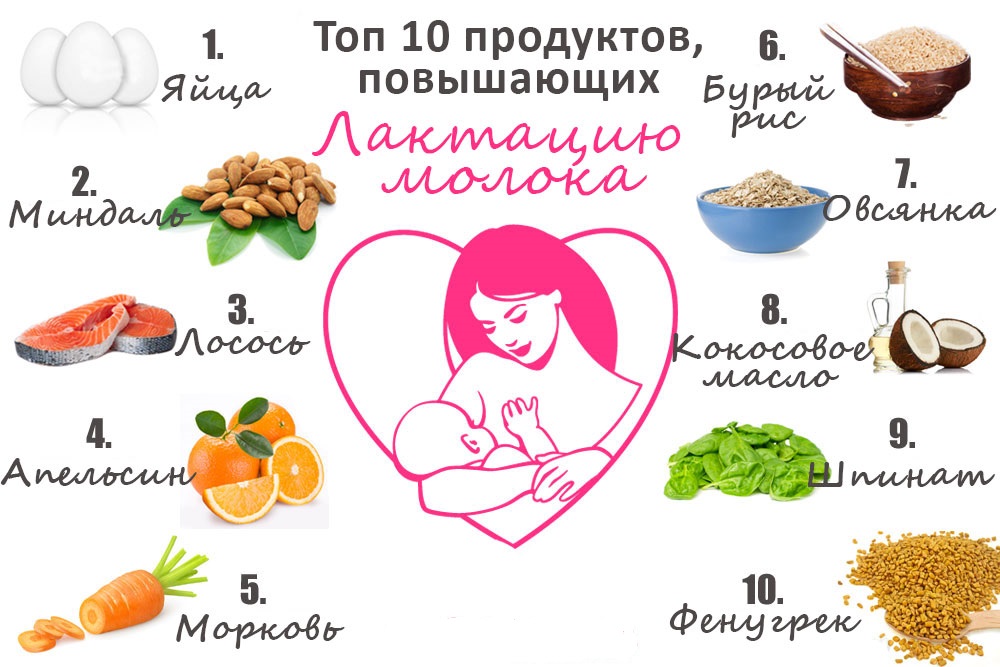Even if you do not have problems with breastfeeding, you always need to be prepared that they may occur unexpectedly, and if the problem still occurs, you will have to stop breastfeeding for a while, but do not panic and despair right away. Take it calmly, and then the forced break in feeding will quickly end, and you will get a new and very useful experience.

Your baby was almost a month old, and life began to get into the usual rut. The young mother feels more and more confidence, she has already mastered all the rules and principles of HS, learned to accept proper feeding position, take care of your chest, do massage for prevention lactostasis. She thinks she knows everything about breastfeeding. But here a problem arises ...
The child is not gaining weight
During a routine examination, the pediatrician suddenly finds out that the child has a very small weight gain. After such news, one can easily succumb to panic: indeed, the weight of the child is one of the main indicators of his health and proper development. The pediatrician will say that the baby does not eat up with mother's milk and will offer to feed him with a mixture. But do not rush to storm the stores with baby food, but sit down and calmly think over the problem.
If the weight gain is small, but at least 200-300 grams, and the child’s behavior has not changed and he behaves by age, that is, he sleeps a lot, walks small up to 10 times a day and big after each feeding, then surely nothing threatens his life and health. Let's look at the situation together.
What to do? Reasons why children poorly gaining weight in the first month of life, a lot. The first thing to do is check Does the baby grab the chest correctly?, because this is the key to proper stimulation of the mammary glands and, accordingly, the production and release of a sufficient amount of milk. Just because a baby is breastfeeding for a long time does not mean that he has been eating all this time. The baby may very well use the nipple as a dummy - this calms him.
If during feeding the child smokes and rarely swallows, it means that there is really not enough milk. Mom needs to increase its number, and it is not as difficult as it seems.
We also read: How to increase lactation
Doctor's comment:
“Children do not grow evenly, but irregularly. At 3, 6, 9 and 12 months, the growth of the child can increase by a couple of centimeters in just one night. And, of course, such a “big peanut” will need more food, and mom will need time to switch to milk production in new, increased volumes.Someone needs a few days for this, and someone a week. A temporary lack of milk is not a reason to panic: frequent and prolonged application of the baby to the breast (even if it is empty) stimulate an increase in lactation. ”
Colic
The smooth functioning of the intestines and stomach also contributes to weight gain. But in children of the first months of life, the digestive system is not yet developed, which means that the risk of painful colic. The baby can begin to cry in the first minutes of feeding and toss the chest, remaining hungry. The process of digestion in a child starts with food, which means that colic and sucking begin at about the same time.
What to do? To alleviate the suffering of the child, the mother should carefully examine her diet and determine toWhat foods can increase colicand then exclude them. Also need to learn do baby tummy massage, do special gymnastics with him, put a gas pipe, drink dill water. You can consult a doctor who will prescribe the medicine for the child. Just do not self-medicate - all medicines for the child should be prescribed by a doctor!
Empty chest
In the first months of lactation, the mother feels as the milk in the breast decreases after feeding, and during the break, it is added. This sensation lasts all day: the chest is filled, then emptied (heavier and lighter), after the child eats. After 3-4 months, sensations change: the chest remains and seems empty throughout the day, and is filled only in the morning or after long intervals between feedings. But this does not mean that the rest of the time milk is not added. It is produced as before, or even more.
What to do? Pay attention to how the baby behaves during feeding - he calmly sucks his chest and, having satiated, falls asleep. If the baby makes uniform swallowing movements, then everything is in order - he receives milk. Unusually empty breasts are the consequences of physiological processes in the body of a nursing woman: against the background of recovery after childbirth and the normalization of hormonal levels, the mammary glands begin to work in a different, more rational mode. Milk is no longer stored in the chest for hours until the child is hungry, but arrives exactly at the moment when the baby begins to eat. The feeling of fullness of the mammary glands arises only with prolonged intervals between feedings. But you do not need to specially stretch the pauses between feedings - for mom it is a direct path to lactostasis, and for the child - unnecessary experiences.
Baby sucks little
The baby is applied to the chest and after 5-10 minutes throws it and turns away. And the intervals between feedings do not decrease, but rather become larger.
What to do? Do not try to forcefully hold the baby by the chest - he will begin to actively resist. Do not force the child to eat, even if you are absolutely sure that he was not full. Excessive pressure on children about food, as well as sleep, will not lead to anything good. If the mother begins to constantly decide for the child when to eat and when to sleep, then the baby may lose its own guidelines. In children after three months, curiosity is much stronger than the desire to eat, therefore, after eating a little, the child throws his chest and switches his attention to something more interesting: a loud sound or some kind of movement occurring nearby. You can try to feed the baby in the quietest and darkest corner of the house, where no one can stop you. But do not worry if he finds something interesting there. The baby will get the right amount of milk in the evening or morning feeding.
Nipple plugs
If yesterday you gave your child a try to slice an apple or some other complementary foods, then do not be alarmed when you find on your nipple a tiny white dot covering one of the ducts. This reaction to the introduction of new products is completely normal.But blockage can cause the development of lactostasis, which is accompanied by high fever, soreness and tightening of the chest.
What to do? Changes in the child’s diet entail changes in the composition of the saliva and microflora of the oral cavity, too. Feeding leaves an acidic environment in the baby's mouth, which is why microorganisms get on the mother’s nipple, which curdle milk. This leads to the formation of cork. Even thorough breast hygiene after feeding does not always help. To deal with the problem, do breast massage and dissect the mammary glands through open ducts - thus avoiding mastitis and inflammation. Sometimes coping with a cork helps rubbing the nipples with a bath towel.
Another way: disinfect a thin needle with hydrogen peroxide, take a magnifying glass and gently stick the needle into the center of the white dot by about 1 millimeter. Do not be afraid, it does not hurt, because the needle enters the duct, not the skin. Now make a few decanting movements, and if droplets of milk appear, continue to express the breast until it becomes soft.
The baby often wakes up
If the child sleeps next to his mother, then he eats right during sleep, without shaking the night silence with hungry cries. But sometimes closer to the year the situation changes: the baby often begins to wake up, demanding a chest, and then can not sleep. It starts to seem to you that he doesn’t eat up with milk alone, but even evening feeding with porridge does not save the situation.
What to do? Frequent awakenings and crying in the middle of the night are usually associated with the transition of the child’s nervous system to the next level. The baby wakes up from the fact that he begins to feel the urge to urinate. When he wakes up, he out of habit puts himself on his chest, eats and after a while wants to write again. There are several ways out of this situation. If the baby is almost a year old, then you can stop breastfeeding. If the baby is still far from a year old, then you can adjust the nightly feedings according to the age norm and strictly adhere to the feeding according to the schedule. If during the day the child eats every three hours and sleeps well between meals, then feed him at night in the same way.
You can try not to put the baby on the diaper for the night and hold it over the basin or absorbent diaper near the bed a couple of times. So babies better empty their bladder and sleep better.
We also read:









